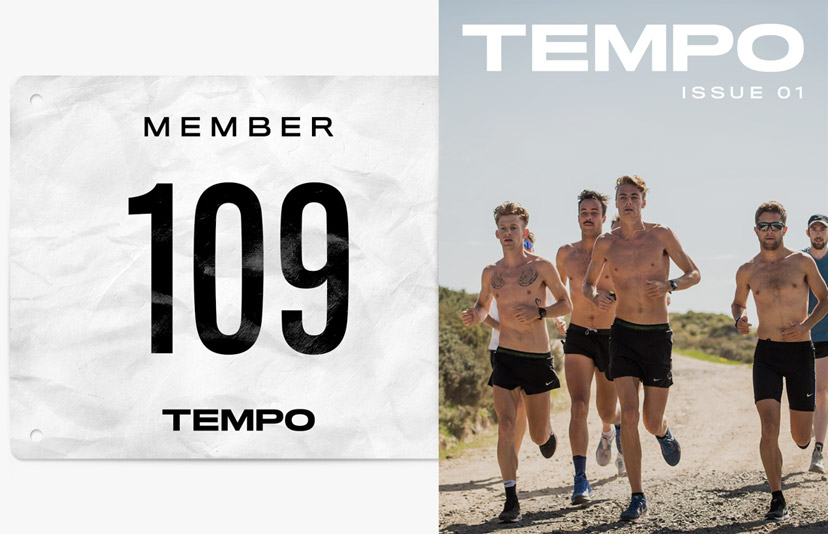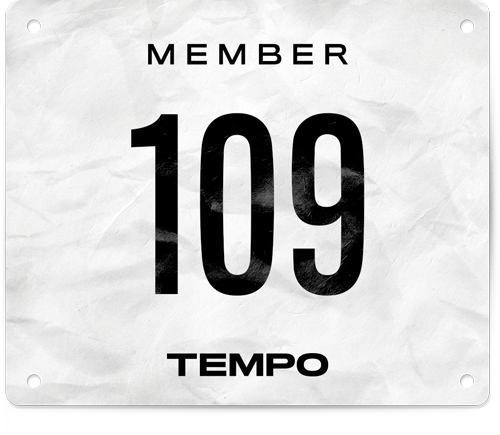Culture
UNSPONSORED Project
BANDIT RUNNING WANTS TO EVOLVE THE SPORT
Editor’s note: Tim Rossi is the co-founder of Lostboys Track Club and writes on many aspects of running culture for TEMPO. He also leads community engagement for Bandit Running, who bring you this feature.
How do you grow the sport of running? Ask anyone involved in the sport and you’ll likely end up in a two-hour conversation. Running is the most participated in sport in the world, but it continuously struggles to bridge the gap between the masses who participate and the top-performing “professionals”. There are 50,000 people who line up for the NYC Marathon each year, but how many of them know the names Faith Kipyegon, Jakob Ingebrigtsen, Helen Obiri or Eliud Kipchoge?
These superstars are important – people should be familiar with the world’s best and their individual stories so they too can dream. Every runner who signs up for a race should feel that greatness is something they too can achieve. You want to inspire them. But at the same time, these participants are important as spectators, fans of the sport; their eyes are important from a financial point of view. More eyes equals more money.
“We’re a year old as a company, and we know the level of support athletes need at the pinnacle. We want to be there in the future; we’re not there yet.”
Tim Rossi
Remember in the first paragraph when I put quotation marks around the word professional? Well, that’s because the number of athletes making a living in the sport are famously few. If you’re a world record holder, an Olympic medalist or an NCAA champion, you’re probably good. But if you’re squeaking your way into a national final or are over a certain age threshold? Good luck.
This is especially true in the US, where sponsorship money primarily flows from the major footwear brands. Other countries have the club infrastructure, and you’ll occasionally see more than one brand logo appear on someone’s kit. All to say, money is limited.
And money can mean opportunities. For Bandit, the Brooklyn-based running and lifestyle apparel brand that I work for, this led to a ton of internal conversation. At our core, we are champions of those individuals out there chasing their dreams because they love it. Whether that dream might be an OTQ in the marathon, to reignite the flame, to see how far you can go, to inspire, or anything in between.
So, for US Outdoors – more formally known as the 2023 USA Outdoor Track and Field Championships – we wanted to support athletes. But we also knew that these athletes are looking for long-term sponsorship deals. We’re a year old as a company, and we know the level of support athletes need at the pinnacle. We want to be there in the future; we’re not there yet.
But we can still do something. Thus, the UNSPONSORED program was born. We’re coming to US Outdoors with unbranded Bandit singlets and crops. The best performance tops in the game but with a twist – we’ve removed all our normal Bandit branding. We’re giving this gear to athletes as a way for them to let the world know they’re currently unaffiliated. The hope is that they perform well enough to secure a long-term deal.
For those athletes helping us tell this story, we’ve been able to provide short-term financial support around this specific moment – that’s to say we paid everyone you see pictured.
More than anything, we’re on a mission to evolve the sport of running – and we’re hoping that this small step sparks more conversation.
And there’s tons of conversation to be had. To make it clear, we’re not calling on other brands to do more. The major players are doing a hell of a lot. The question we’re looking at is: How can the sport and the sponsorship model evolve to allow more people to continue to pursue their goals?
This is also where I should make it clear that I know everyone has their own opinion. Below are the ones that always bubble to the top for me when I’ve had a few beers and am sitting around with my track and field homies. But there are people who know way more than I do that have different thoughts.
With that massive qualifier out of the way, I think it boils down to two main things.
One: the sport needs to evolve. The organisations that control running at the highest level need to rethink how the sport is presented, with the objective of engaging more fans and driving more eyes to the sport. An easy example here is what the NBA has done with game footage, allowing highlights to be rapidly shared on social media.
“We analogize our strategy to snacks versus meals. If we provide those snacks to our fans on a free basis, they’re still going to want to eat meals — which are our games. There is no substitute for the live game experience. We believe that greater fan engagement through social media helps drive television ratings.” —Adam Silver, NBA Commissioner
It’s not apples to apples, but I’m in the camp that believes if you allow footage from meets to be used for post-race analysis, social posting, TikToks, et cetera, you’ll drive people back to footage of entire races. And ultimately you’ll get in front of more fans.
But from a structural perspective I think there are even bigger things that can be done. What if we concentrated resources around five major events annually? Or what if we recognised that specific events have specific fans, and we separate field events, sprints and distance races from an event perspective? A league where athletes are paid by the league to compete at X% of the events on the calendar?
That’s all long term, which brings us to point two: athletes need to figure out ways to drive eyes in the short term. I firmly believe the solution lies in the structure, but for the time being, if athletes want more money there’s stuff they can do. There are simple rules that need to change to help, but unless you’re one of the best in the world you need to be driving eyes differently. And this doesn’t necessarily mean you should just start cranking on Instagram; we all have different ways of engaging with and growing our community. Whether it be hosting a community run, going to running camps, blogging, ripping on social media, whatever. Do what is authentic to you, and roll.
Ultimately, running is beautiful because the experience for professionals and amateurs, for 2:00 marathoners and first-time finishers, is the same. We’re all running, pushing our bodies; we’re all out on the same roads, just at different paces. That shared religion is a way to connect, in ways other sports cannot.
And from the short term to the long, the goal is the same: we all want the sport to grow.
It can, it must.


